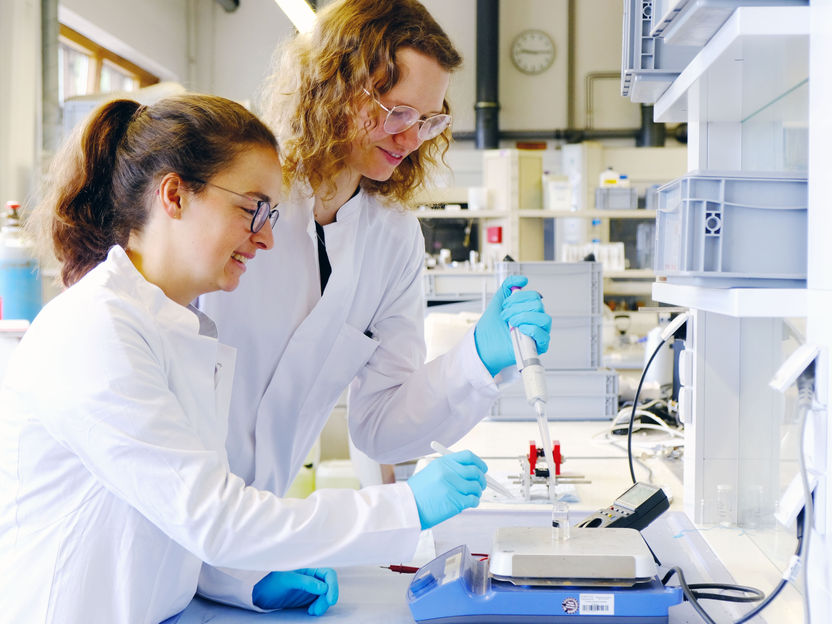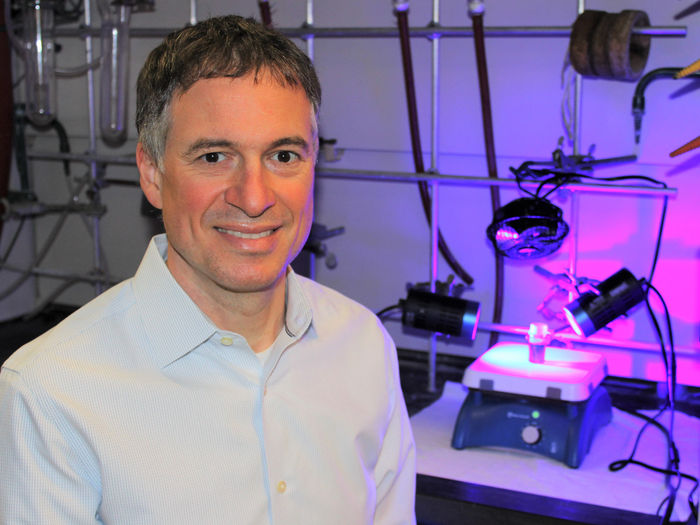Atomistic simulations go the distance on metal strength
Lawrence Livermore National Laboratory researchers have dived down to the atomic scale to resolve every "jiggle and wiggle" of atomic motion that underlies metal strength.

aitoff; pixabay.com; CC0
In a first of its kind series of computer simulations focused on metal tantalum, the team predicted that, on reaching certain critical conditions of straining, metal plasticity (the ability to change shape under load) meets its limits. One limit is reached when crystal defects known as dislocations are no longer able to relieve mechanical loads, and another mechanism - twinning, or the sudden reorientation of the crystal lattice - is activated and takes over as the dominant mode of dynamic response.
The research appears in Nature.
Strength and plasticity properties of a metal are defined by dislocations, line defects in the crystal lattice whose motion causes material slippage along crystal planes. The theory of crystal dislocation was first advanced in the 1930s, and much research since then has focused on dislocation interactions and their role in metal hardening, in which continued deformation increases the metal's strength (much like a blacksmith pounding on steel with a hammer). The same simulations strongly suggest that the metal cannot be strengthened forever.
"We predict that the crystal can reach an ultimate state in which it flows indefinitely after reaching its maximal strength," said Vasily Bulatov, LLNL lead author of the paper. "Ancient blacksmiths knew this intuitively because the main trick they used to strengthen their metal parts was to repeatedly hammer them from different sides, just like we do in our metal kneading simulation."
Due to severe limits on accessible length and time scales, it was long thought impossible or even unthinkable to use direct atomistic simulations to predict metal strength. Taking full advantage of LLNL's world-leading HPC facilities through a grant from the Laboratory's Computing Grand Challenge program, the team demonstrated that not only are such simulations possible, but they deliver a wealth of important observations on fundamental mechanisms of dynamic response and quantitative parameters needed to define strength models important to the Stockpile Stewardship Program. Stockpile Stewardship ensures the safety, security and reliability of nuclear weapons without testing.
"We can see the crystal lattice in all details and how it changes through all stages in our metal strength simulations," Bulatov said. "A trained eye can spot defects and even characterize them to an extent just by looking at the lattice. But one's eye is easily overwhelmed by the emerging complexity of metal microstructure, which prompted us to develop precise methods to reveal crystal defects that, after we apply our techniques, leave only the defects while completely wiping out the remaining defect-less (perfect) crystal lattice.
The research team developed the first fully dynamic atomistic simulations of plastic strength response of single crystal tantalum subjected to high-rate deformation. Unlike computational approaches to strength prediction, atomistic molecular dynamics simulations rely only on an interatomic interaction potential, resolve every "jiggle and wiggle" of atomic motion and reproduce material dynamics in full atomistic detail.
Most read news
Other news from the department science

Get the chemical industry in your inbox
By submitting this form you agree that LUMITOS AG will send you the newsletter(s) selected above by email. Your data will not be passed on to third parties. Your data will be stored and processed in accordance with our data protection regulations. LUMITOS may contact you by email for the purpose of advertising or market and opinion surveys. You can revoke your consent at any time without giving reasons to LUMITOS AG, Ernst-Augustin-Str. 2, 12489 Berlin, Germany or by e-mail at revoke@lumitos.com with effect for the future. In addition, each email contains a link to unsubscribe from the corresponding newsletter.
Most read news
More news from our other portals
Last viewed contents
Vladimir_Ipatieff

Muscles for soft robots inspired by nature - Materials researchers significantly improve the performance of hydrogel actuators
BASF steps up contract manufacturing activities
Gaylussite





























































